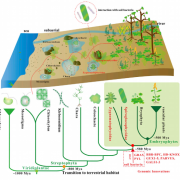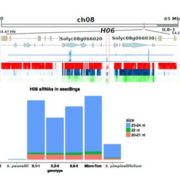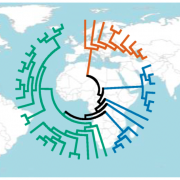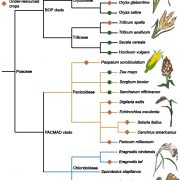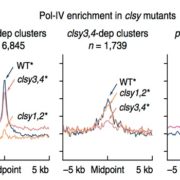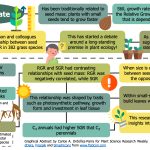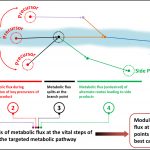PIFs link environmental changes with chromatin dynamics (Nature Genetics)
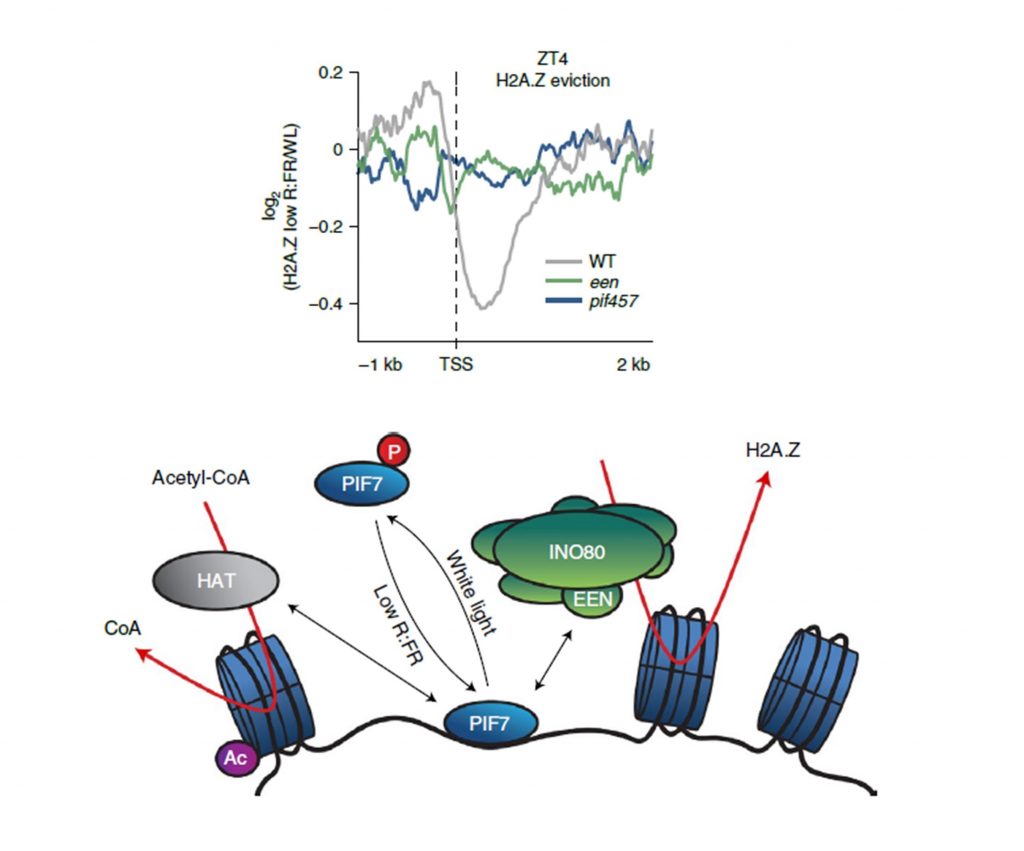 PHYTOCHROME INTERACTING FACTORS (PIFs) play a pivotal role in mediating the responses of plants to various environmental stimuli. Although the importance of PIFs in shade avoidance response is well known, the relative contributions of different PIFs have not been discretely determined. In a recent study, Willige et al. identified that among the PIFs, PIF7 acts as the predominant regulator of seedling growth changes in response to low R:FR light that simulate shade. Using a genome-wide approach, the authors found that PIF7 is rapidly dephosphorylated and released from photobodies under low R:FR, and directly activates numerous transcription factor genes, initiating a complex network that results in widespread gene expression changes. Interestingly, the activation of various genes under low R:FR is closely associated with a dynamic and reversible reduction in the histone variant H2A.Z and an increase in the lysine-9-acetlylated histone H3, which are gene repression and activation marks in the chromatin, respectively. The removal of H2A.Z is mediated by a highly conserved SWI/SNF chromatin remodeler complex named INO80. PIFs promote H2A.Z eviction under low R:FR by interacting with EIN6 ENHANCER (EEN), one of the subunits of INO80. The authors end the study by speculating the possible role of PIF-INO80 module in other environmental responses such as thermomorphogenesis, which has subsequently been demonstrated by Xue et al (2021). (Summary by Yadukrishnan Premachandran @yadukrishprem) Nature Genetics 10.1038/s41588-021-00882-3
PHYTOCHROME INTERACTING FACTORS (PIFs) play a pivotal role in mediating the responses of plants to various environmental stimuli. Although the importance of PIFs in shade avoidance response is well known, the relative contributions of different PIFs have not been discretely determined. In a recent study, Willige et al. identified that among the PIFs, PIF7 acts as the predominant regulator of seedling growth changes in response to low R:FR light that simulate shade. Using a genome-wide approach, the authors found that PIF7 is rapidly dephosphorylated and released from photobodies under low R:FR, and directly activates numerous transcription factor genes, initiating a complex network that results in widespread gene expression changes. Interestingly, the activation of various genes under low R:FR is closely associated with a dynamic and reversible reduction in the histone variant H2A.Z and an increase in the lysine-9-acetlylated histone H3, which are gene repression and activation marks in the chromatin, respectively. The removal of H2A.Z is mediated by a highly conserved SWI/SNF chromatin remodeler complex named INO80. PIFs promote H2A.Z eviction under low R:FR by interacting with EIN6 ENHANCER (EEN), one of the subunits of INO80. The authors end the study by speculating the possible role of PIF-INO80 module in other environmental responses such as thermomorphogenesis, which has subsequently been demonstrated by Xue et al (2021). (Summary by Yadukrishnan Premachandran @yadukrishprem) Nature Genetics 10.1038/s41588-021-00882-3


